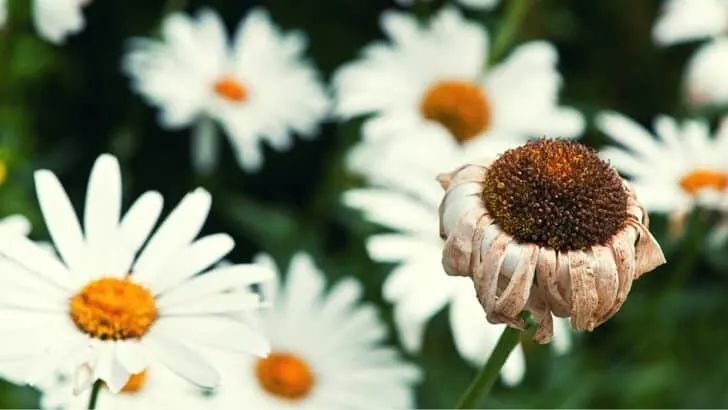Learn how to deadhead daisies. Daises are a favorite flower among gardeners. They’re iconic, easy to grow, and beautiful.
Daisy flowers have white petals that surround a yellow center.
If you want more daisy blooms this year, you’ll need to know how to prune the daisy plant.
Table of Contents
How to Deadhead Daisies
To deadhead daisies, you’ll need a cutting tool and gloves. Be sure that the cutting tool is clean and sterilized. Identify the spent flowers, and use the tool to cut them away. Daisies are best deadheaded early in the growing season.
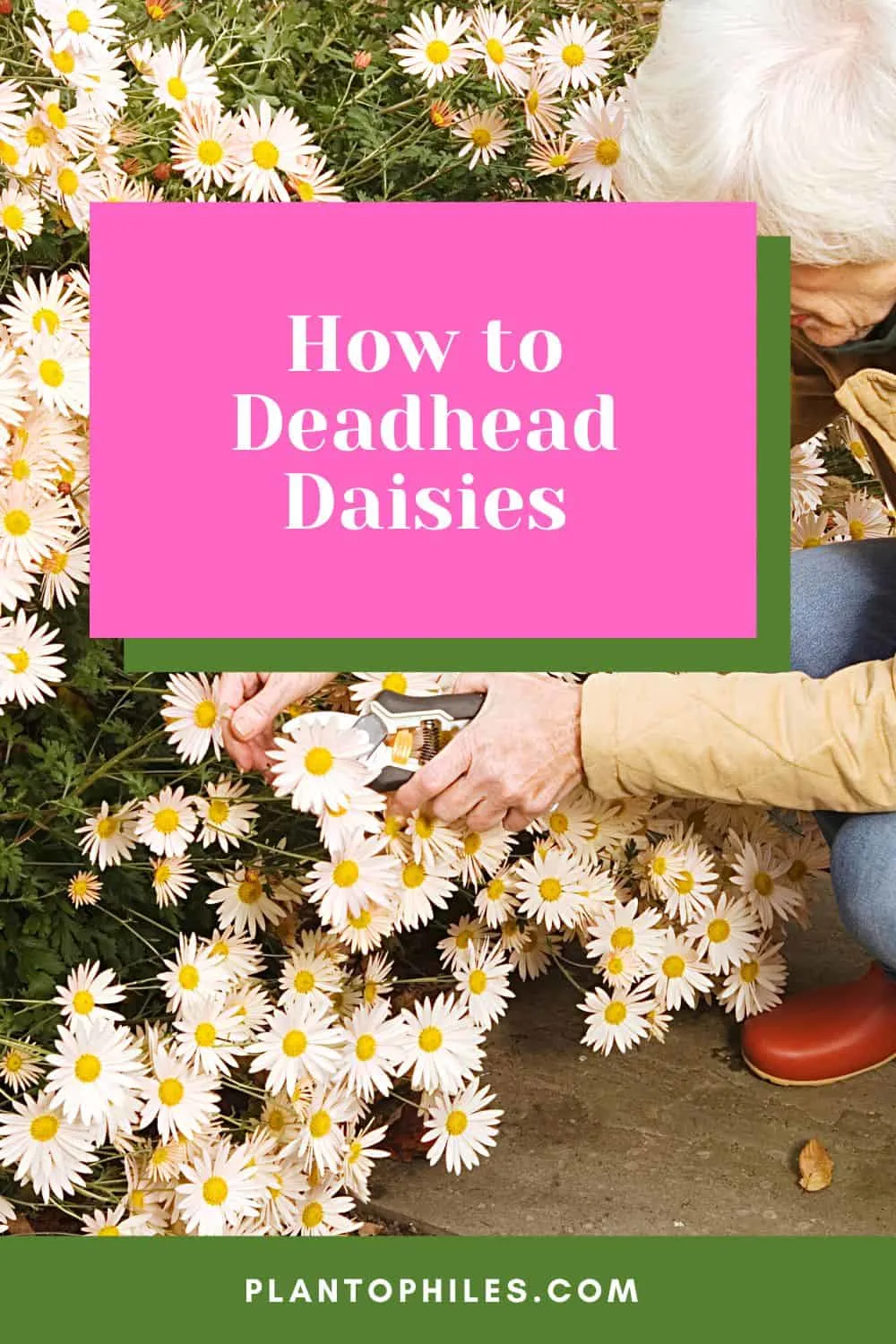
Why Deadhead Daisies?
Deadheading daisies is a great way to get more blooms and keep your plants looking great all season long.
Daisies have a simple goal, which is accomplished through their life cycle. They begin by sprouting, growing, and then producing blooms. These parts of the cycle facilitate the plant’s ultimate purpose, which is to reproduce.
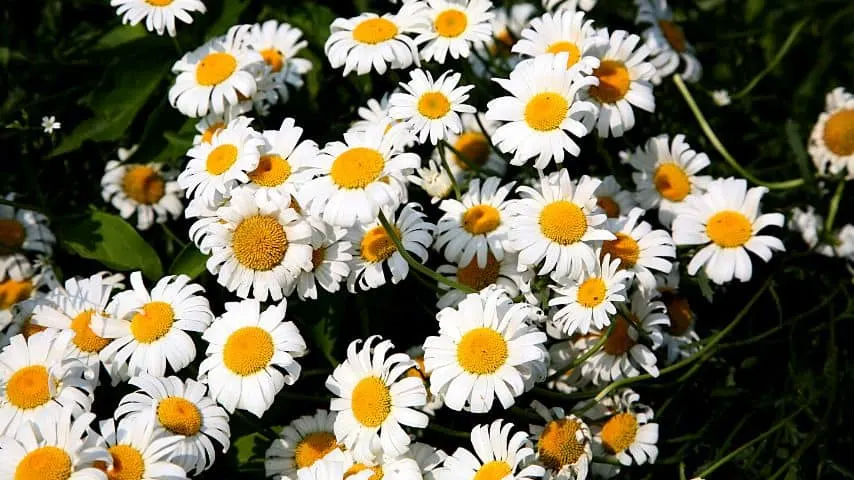
Daisies do this by producing seeds. The daisy doesn’t grow flowers because they are beautiful. They grow them to attract pollinators and to create seeds.
Once the flowers are done blooming, they will transform into seeds. This is where the term “gone to seed” comes from.
The seeds are then released. They fall to the ground and fly in the air so that the seeds can spread.
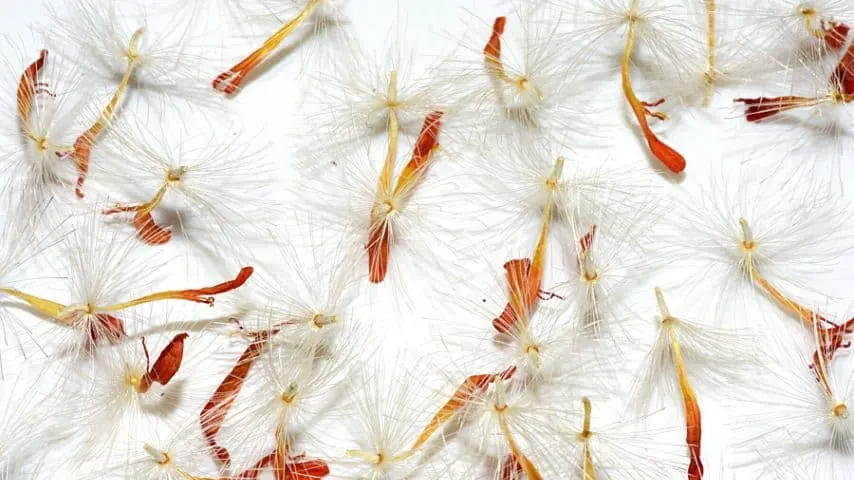
When spring comes, some of these seeds will sprout. Then, each daisy begins the process again.
Gathering and Preparing Your Tools
You’ll need a few tools to deadhead your daises. These are cutting tools and gloves. Start by pruning the dying flower heads first.
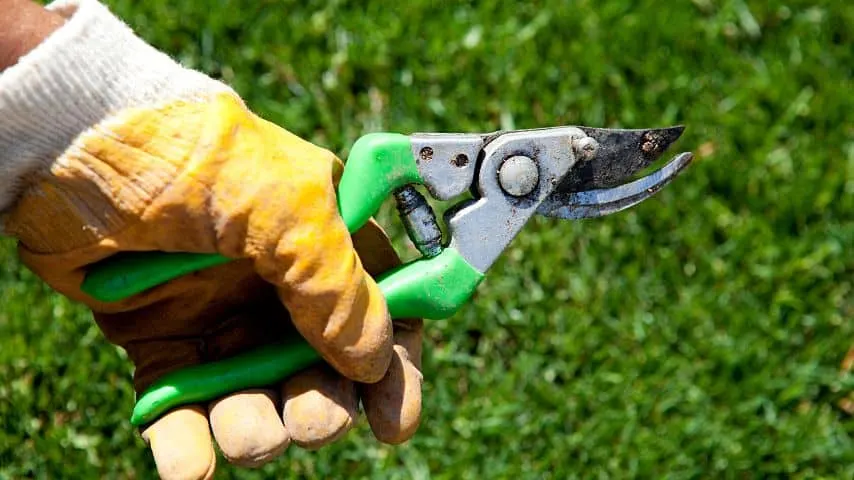
Preparing Your Cutting Tool
You can use a knife, scissors, or garden shears to trim away the dead blooms. Which is best depends on your preference, what you have on hand, and the thickness of the stems.

When working with plants, sterilization is essential. Just as you would clean your knife before and after cutting chicken for dinner, you’ll need to clean your cutting tool as well.
You can do this with the alcohol found in a medicine cabinet or a first aid kit. Just wipe the blade before and after cutting.
You can mix 1 part bleach with 10 parts water and apply this to the blade. This prevents the spread of plant diseases.
Why Wear Gloves
You may be surprised to hear that gloves are a good idea when working with daisies. They aren’t toxic, and they don’t have thorns. However, they do have a compound called sesquiterpene lactones.
This can irritate your skin, particularly if you are sensitive to lactones. Wearing gardening gloves allows you to avoid the compound, which will be released when you cut the stems.
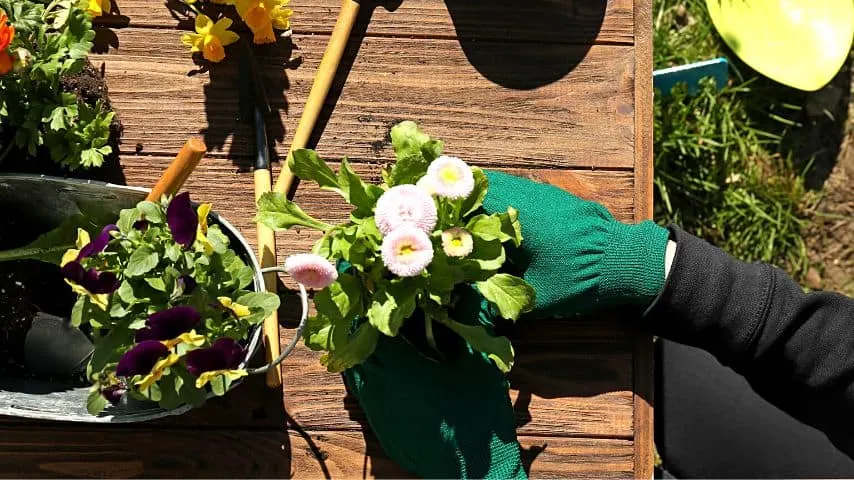
Identifying Dead Blooms
Now, you’re ready to inspect your plant. It’s important to catch the blooms before they go to seed. They should be removed when they begin to fade and wilt.
Once they turn brown, they may have already set seed.
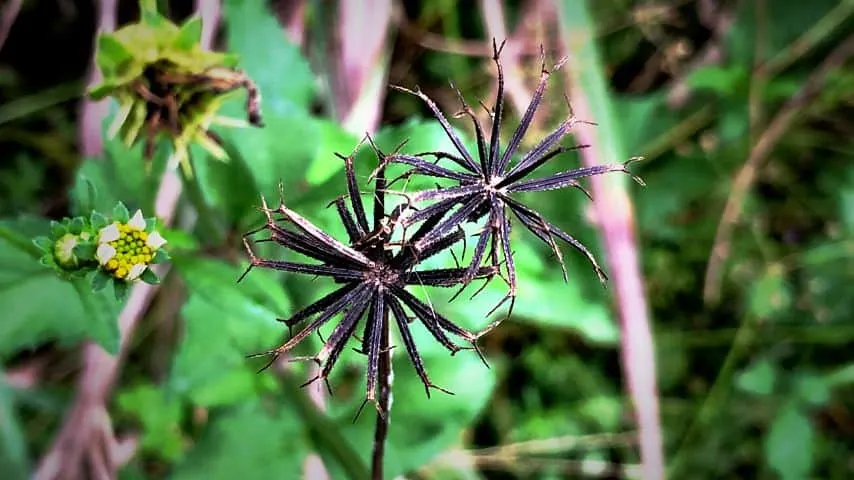
When the blooms go to seed, this stops the plant from flowering. Instead of producing more flowers, the plant focuses on seed production.
Deadheading Daises
When deadheading daisies, you’ll need to determine where to cut, and then cut the dead blooms away.
Determining Where to Cut
Where you cut will depend partially on the type of daisy you have.
If you have a variety that produces a single bloom per stem, like Shasta daisies, you can cut the entire stem away. Follow the stem to the main stalk, and cut it close to the main stem where it meets the foliage.
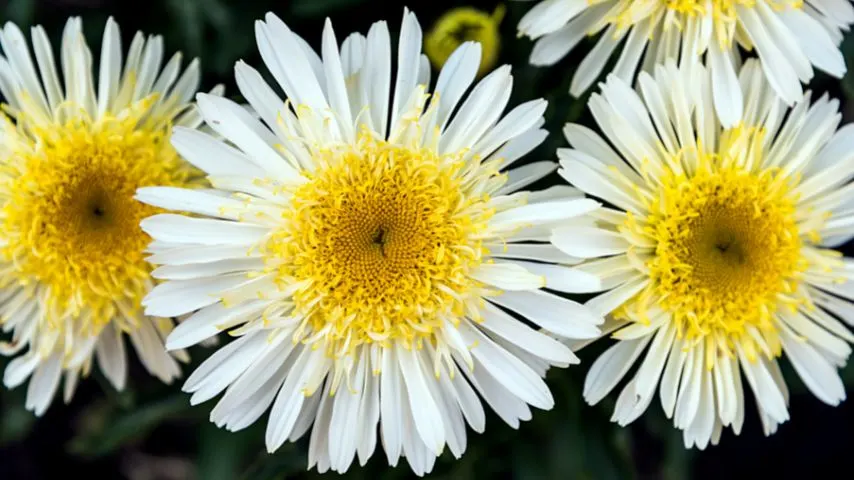
If your daisies produce multiple blooms per stem, you’ll need to locate a growing point or lateral bud. This allows you to preserve healthy blooms while removing the dead ones.
Growing points include leaves and lateral stems. If you notice a new bud, this is the perfect growing point.
Cut the daisies above the lateral bud.
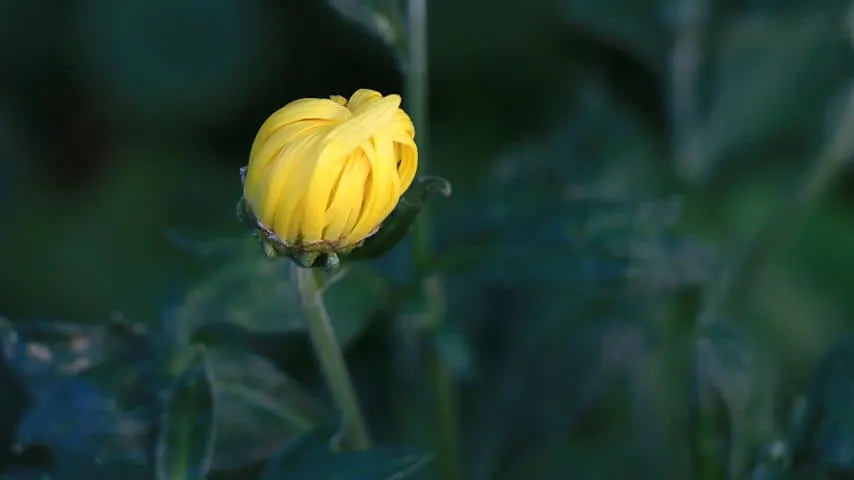
If none of these are present, move down to the basal stem. You’ll cut as far down as possible but above the foliage.
If more than 2/3 of the blooms are dead, you can prune the entire plant. Cut it near the plant’s base. This can stimulate the daisy to grow again and eventually provide more blooms.
Cutting the Blooms — How to Deadhead your Daisies
Look out for dead daisies. The faded blooms are the ones you want to remove. Once you spot brown and wilting flowers, it is time to deadhead.
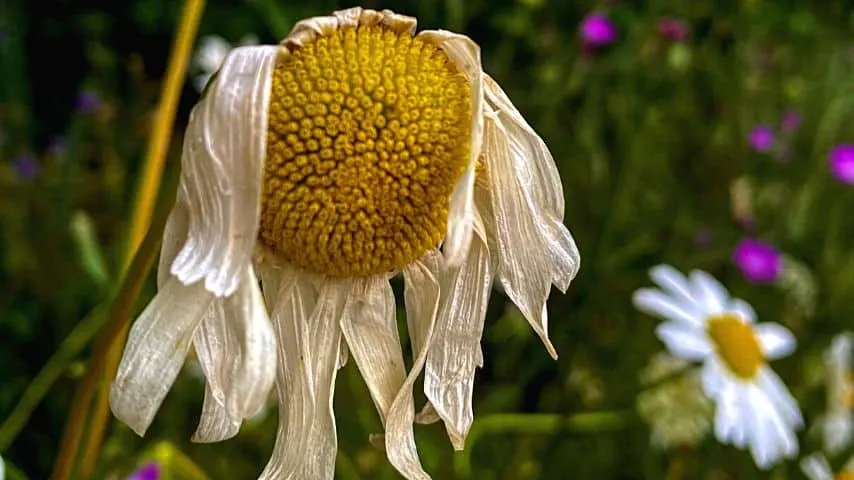
Remove spent blooms. They are just dead weight. Spare the new flowers. Deadheading and pruning will foster new growth.
Once you’ve determined where to make your cut, you are ready to cut the spent blooms away from your daisy. Be sure your tool is clean. Hold the daisy with one hand, and use the other hand to cut with your scissors.
Deadheading your daisies is as simple as splitting petals. By removing spent flowers, you will get fewer seed pods and more blooms.
Once you’re finished deadheading and have removed all spent blooms, it is time to enjoy the healthy flowers.
The flowering season for Shasta daisies is all summer and will continue into the fall. They start to bloom in early summer, according to the University of Florida.
Cutting Daisies for Flower Arrangements
In addition to deadheading daisies, you can cut blooming flowers to enjoy them as a flower arrangement.
Choose flowers that have just bloomed or buds that are about to open. Cut the stems. Place them in a clean vase with fresh water.
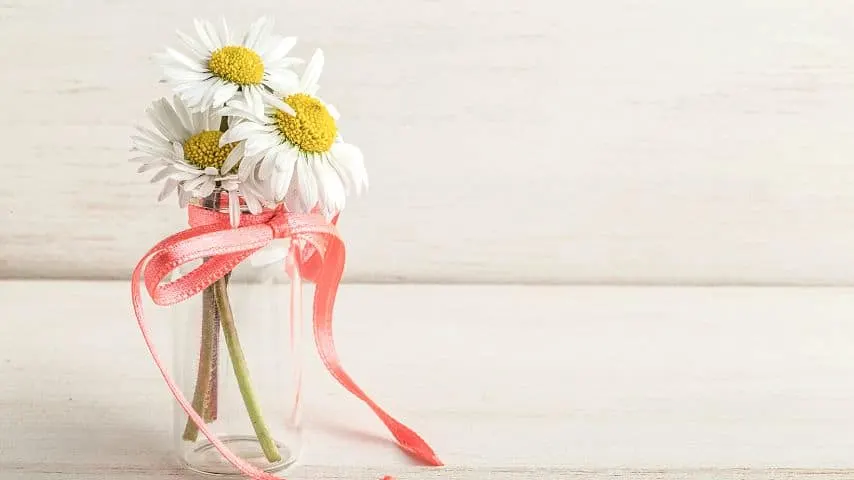
Be sure to remove any leaves from the stem below the water line. Leaves in the water will decay and cause your blooms to wilt more quickly.
Just like deadheading, this encourages the plant to make more blooms, aside from you being able to enjoy some of your daisies.
Gathering Daisy Seeds
If you want to have daisy seeds, there are two ways you can gather them. Allow nature to take its course or gather them for planting.
If you want to gather daisy seeds, you’ll need to stop deadheading them in time for them to produce seeds.
This will be between September and October, depending on the location of the place you’re living in.
When you stop deadheading the daisies, the plant will shift its focus from flowering to producing seeds. You’ll see the seeds in the middle of the flower.
This is the area that was yellow when it was in bloom. When it turns brown and begins to crack, it’s ready to harvest. If you harvest it too soon, you won’t get useable seeds. This is why it’s important to stop deadheading and harvest at the right times.
To harvest, cut the stem at the base of the plant. Place the seed head in a paper sack. Tie a string around the bag, leaving plenty of string to hang the bag.
Hang the bag upside down so the seed head is pointing towards the ground and covered with the closed end of the bag. Once it’s dried completely, shake the stem. This releases the seeds from the seed head.
The seeds fall into the bag. Remove the seed head, and store the bag in a cool, dry place until ready to plant.
Benefits of Deadheading Daisies
The main benefits of deadheading are:
- More vigorous growth of the root and stem system
- Keeps daisies blooming all summer long
- Healthier flowers
- Cut flowers for flower bouquets
- Tidier garden in autumn and winter
- Fewer space for plant pests to spread
Read about how to grow Gerbera daisies by reading my care guide.
Frequently Asked Questions
What happens if you don’t deadhead daisies?
If you don’t deadhead daisies, you’ll get fewer blooms. The plant will not be as attractive because the dead blooms will still be present. Not deadheading also allows the plant to go to seed quicker, which shortens the blooming season.
Are daisies perennials or annuals?
Daisies are perennials. A few species will only return if they are grown in zone 9. Most varieties, including Shasta daisies, are perennials as high as zone 3 to 4.
Final Thoughts on Deadheading Daisies
Deadheading daisies will help the plant stay healthy and provide you with blooms all season long.
You can also cut daisies for fresh flowers indoors or harvest seeds from dead flowers.

Daniel has been a plant enthusiast for over 20 years. He owns hundreds of houseplants and prepares for the chili growing seasons yearly with great anticipation. His favorite plants are plant species in the Araceae family, such as Monstera, Philodendron, and Anthurium. He also loves gardening and is growing hot peppers, tomatoes, and many more vegetables.

